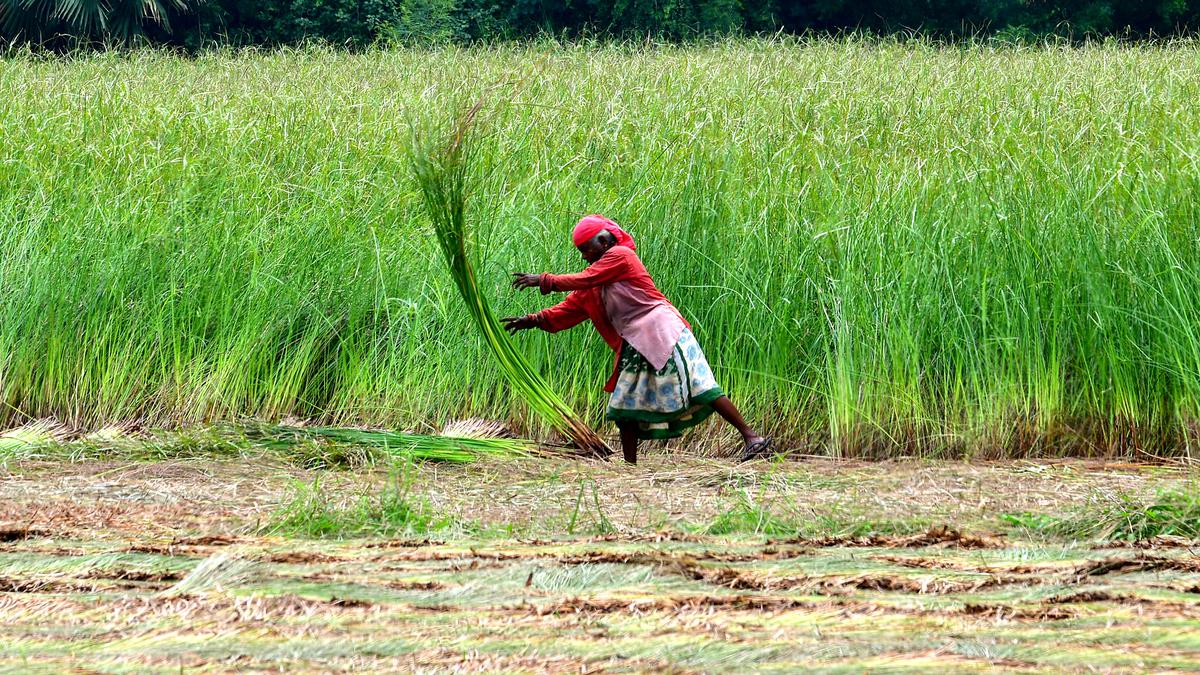
In Frames | Weaves of grass
The Hindu
The Hindu’s News in Frames | November 5, 2023
The transformation of simple straw (dried grass) into a mat comfortable enough to lie down on is unparalleled. Known as korai paai in Tamil, such mats are a household object in the interiors of southern India. These mats are crafted from the dry grass cultivated along the banks of the Cauvery in Karur district of Tamil Nadu. Korai grass ( Cyperus pangorei) is cultivated on more than 2,500 acres of land at Nerur, Paramathi, Vangal, Senappaadi and Unniyur in the district. Once the grass reaches its full height, it is cut down for making the mats.
At the time of harvest, farmers begin their day as early as 6 a.m. The grass is dried in the sun before dispatch to the market.
The harvested grass is purchased by weavers from the market. They weave the grass into mats after dyeing them in various colours and use fibre from aloe vera plants to hold it together. These are known as naar paai and in a day, only one mat can be woven by hand by a person. The entire process from cultivating, harvesting, splitting, drying and then dyeing is labour-intensive, and, hence, only a handful of weavers in Viralipatti use the traditional method.
With the coming of technology, aloe vera fibres became replaced by cotton twine and the mats started to be woven in power looms. Nevertheless, this century-old traditional craft has been fading largely owing to a lack interest among the younger generation, and not enough incentive among the makers to sustainably make the business viable.
During summer, straw mats are cool to sleep on, and like many other natural objects, they turn comfortably warm to sleep on in cold weather.
The level of popularity of the mats is such that they are given as wedding gifts in the region. It is a common practice to gift the bride and groom a mat with their names as well with the wedding date woven into the design.













